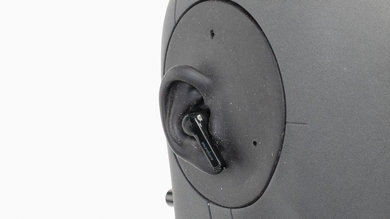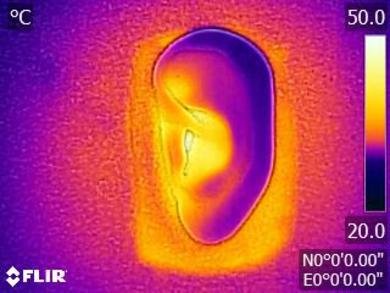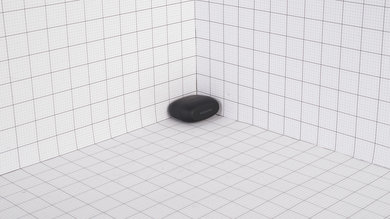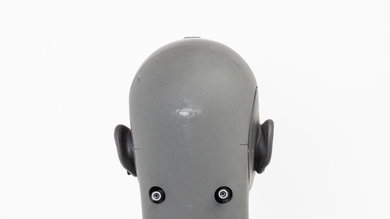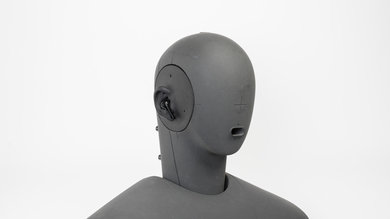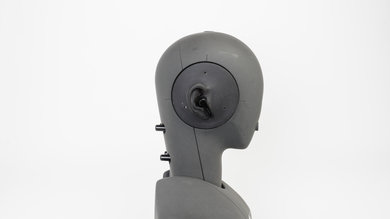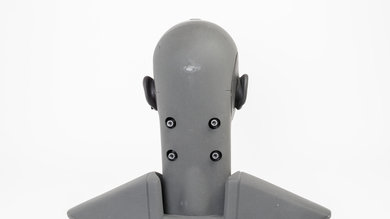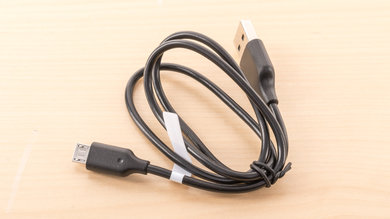The Anker SoundCore Liberty Air True Wireless are mixed usage headphones and are very versatile for everyday casual use. Their truly wireless design resembles the Apple AirPods (1st generation) Truly Wireless, but with a glossier finish. They're very portable, and their in-ear fit blocks lots of ambient noise, which is nice for commuting and at the office. They have a fairly neutral sound profile and have an amazing wireless range. Unfortunately, truly wireless earbuds don’t have very long battery life, and their latency is too high for watching videos and gaming. On the upside, they offer great performance for their price, and most users should be pleased with them.
Our Verdict
The Anker SoundCore Liberty Air true wireless are decent for mixed usage. They're very versatile for everyday casual use, and critical listeners can appreciate their fairly neutral sound profile. They are portable and isolate a good amount of ambient noise, making them a good choice for commuting and the office. Their design is very breathable, and the fit is stable for more intense physical activities. However, some may find the in-ear fit to be tiring after a while. Their latency is also too high to be suitable for watching videos and gaming.
- Very lightweight and portable design.
- Fairly neutral sound profile.
- Great isolation performance.
- In-ear fit might not be for everyone.
- No volume controls.
The Anker SoundCore Liberty Air true wireless are decent for neutral listening. They have a deep and accurate bass, a well-balanced mid-range, and a great treble. However, there’s a slight recess in the mid-range that barely nudges the vocals to the back of the mix, and their treble is a bit uneven on sibilances as some may lack detail and others might sound slightly sharp. Also, fans of heavier sound profiles might find the bass of these headphones to be on the lighter side. The in-ear design might not be the most comfortable for long listening sessions.
The Anker SoundCore Liberty Air are good for commuting and traveling. Their design is very portable and easy to carry around. They also isolate a good amount of ambient noise, including the rumble of bus and airplane engines. Unfortunately, the in-ear fit might not be ideal for long rides and flights, and their 4-hour battery life might not last you a long trip. On the upside, they don’t leak much, so you won’t have to worry about bothering people surrounding you with your music.
The Anker SoundCore Liberty Air are great for sports. These truly wireless in-ears are very portable, and their fit is very stable if you can find the right tip size for your ears. They barely move around and shouldn’t pop out of your ears. Their design is also breathable, so you shouldn’t sweat more while wearing them.
The Anker SoundCore Liberty Air are fair for office use. They create a great seal that blocks ambient chatter, letting you concentrate on your music and tasks. They also don’t leak, so colleagues shouldn’t hear what you’re listening to. Unfortunately, their battery life of one charge isn’t very long, and you’ll need to recharge them during the day with the case. The in-ear fit might not be comfortable for a whole workday, so you might need to take breaks here and there if you feel fatigued.
The Anker SoundCore Liberty Air are poor for gaming. They shouldn't be used for gaming, as their latency is too high, and their microphone quality is sub-par if you play online with friends and teammates. Even if you’re not looking for a microphone, you shouldn’t use these headphones for video games.
The Anker SoundCore Liberty Air aren't suitable for gaming.
Changelog
- Updated Feb 05, 2020: Converted to Test Bench 1.4.
- Updated Nov 21, 2019: Converted to Test Bench 1.3.1.
- Updated Nov 21, 2019: Converted to Test Bench 1.3.
- Updated Jan 29, 2019: Review published.
Check Price
Popular Headphones Comparisons
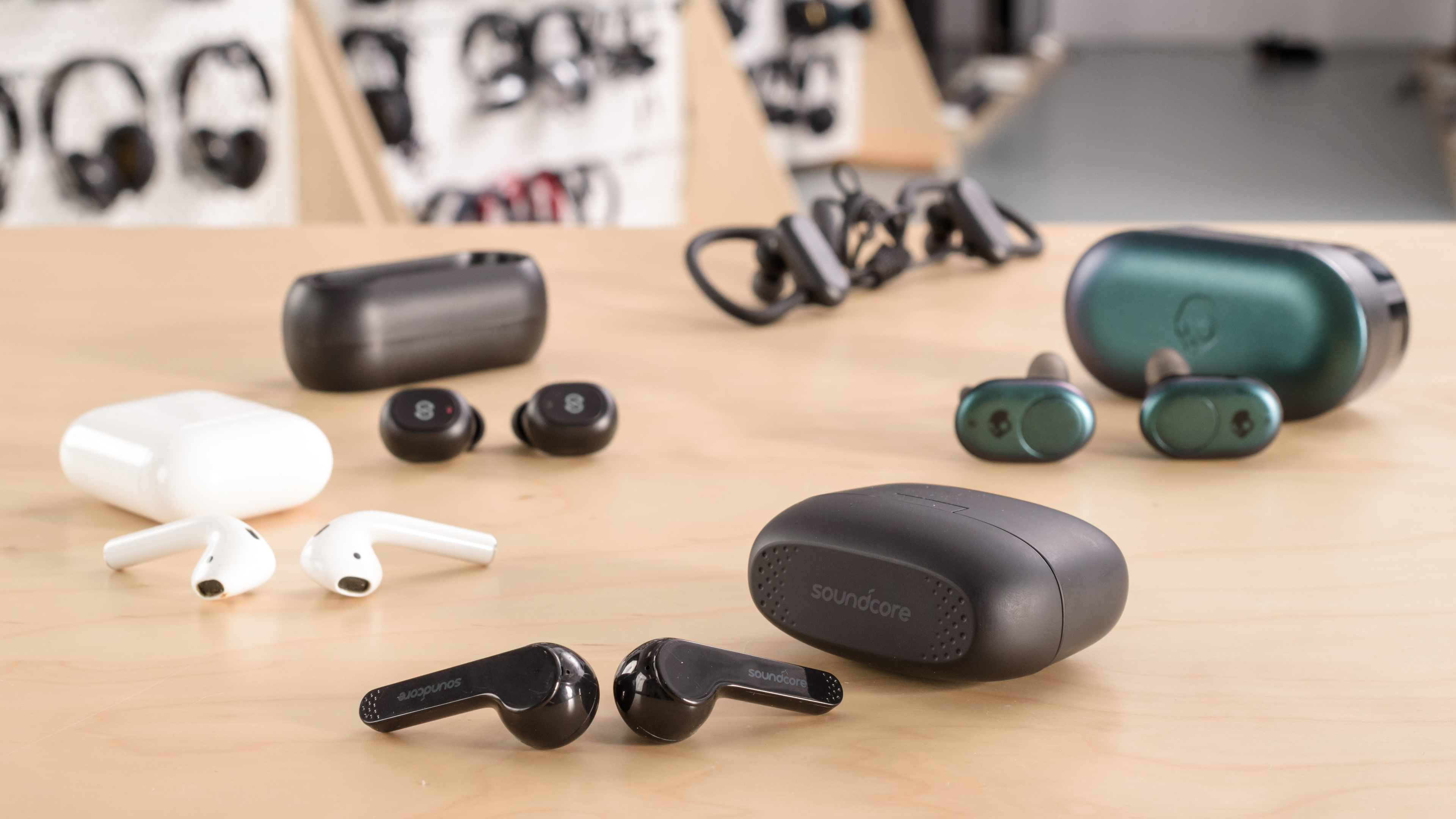
The Anker SoundCore Liberty Air are very versatile, truly wireless in-ears with a fairly neutral sound profile. They have a lightweight design, but they look like a cheaper version of the Apple AirPods (1st generation) Truly Wireless. They also have great isolation performance, which is great for commuting and to use at the office. Unfortunately, the in-ear fit might be fatiguing after long listening sessions, and their latency is high for watching videos and gaming.
See our recommendations for the best wireless earbuds under $100, the best true wireless earbuds, and the best budget wireless headphones.
The Anker Soundcore Liberty Air are better truly wireless earbuds for most people than the JLab Audio JBuds Air Executive Truly Wireless. The Anker isolate more noise and have a more neutral, balanced default sound profile. They don't have any onboard EQ presets though, like the JLab, and they don't have volume controls either. The JLab battery also lasts a bit longer, but they don't have any power-saving features.
The Anker Soundcore Liberty Air are more versatile and cheaper than the RHA TrueConnect Truly Wireless. The Anker might not have volume control, but these in-ears have good audio reproduction. The two headphones are very similar, but the sound quality is what makes the Anker the best option. The Anker might feel a bit cheaper than the RHA due to their plastic and glossy build, but if you're usually careful with your headphones, this shouldn't be a problem. The RHA feel sturdier but don’t have a standby mode like the Anker have.
The Anker Soundcore Liberty Air are slightly better headphones than the JLab Audio JBuds Air ANC Truly Wireless. The Anker have a better-balanced sound profile and they can isolate more noise passively than the JLab with ANC on. However, the JLab are better built and offer a longer continuous and total battery life. The JLab also have less latency on PC, iOS, and Android, although some apps compensate for latency differently.
The Anker SoundCore Life P2 Truly Wireless are similar to the Anker Soundcore Liberty Air. The Life feel slightly better built with a more premium matte finish and have a longer battery life. On the other hand, the Liberty have better noise isolation and a slightly more neutral sound profile.
Test Results

The Anker SoundCore Liberty Air are very low-profile, truly wireless in-ears with a similar design to the Apple AirPods (1st generation) Truly Wireless. They have the same long stalks that protrude outside your ears where you would normally have cables attached. They have a glossy finish that's fingerprint-prone and looks plasticky. They come in an all-black or all-white design.
The Anker SoundCore Liberty Air's in-ear fit is decently comfortable but might not be for everyone. They come with four silicone tip sizes for you to find the most comfortable fit. Also, these headphones are very lightweight, and you barely feel them inside your ears. Some may feel some fatigue after listening to them for a while.
The Anker SoundCore Liberty Air have a decent touch-sensitive control scheme. You get basic functionalities like call/music management and track skipping, but unfortunately, you don’t have any control over your listening volume directly on the earbuds, so you have to change it on your device. On the upside, the control scheme is very easy to use and responsive, but you don’t get any feedback from most commands. You get small audio cues for powering on/off the headphones and during the pairing procedure, but that’s it. Unfortunately, they're not as easy to use as the TREBLAB X5 Truly Wireless or the Jabra Elite Sport Truly Wireless, which have physical buttons with more functionalities. If you like touch-sensitive control schemes, but volume control is a must-have, take a look at the Skullcandy Indy.
Like the Altec Lansing True Evo and most in-ear headphones, the Anker SoundCore Liberty Air don’t trap any heat inside your ear, so you shouldn’t notice a difference in temperature when wearing them. This makes them a good option for sports as you shouldn’t sweat more than usual during physical activity.
The Anker Soundcore Liberty Air come with a nice hard case that's also a charging station for the headphones. It protects the headphones against scratches and impacts, but it isn’t waterproof like the earbuds are. The lid closes by magnetic force, but it opens very easily, and the buds might fall out with a significant impact. On the upside, you get a battery life indicator on the case.
The Anker SoundCore Liberty Air are decently well-built, truly wireless headphones. They're made of glossy plastic that feels cheap, but the buds are dense enough to survive accidental drops without too much damage. The case is also decently made and should help protect the headphones. The earbuds are also rated IPX5 for sweat and water resistance, but we don't currently test for this. However, the case isn't waterproof. For slightly better-built headphones without a glossy finish, take a look at the dense and solid Anker SoundCore Liberty Lite Truly Wireless or Anker Zolo Liberty+ Truly Wireless. If you like the chalk design, look at the RHA TrueConnect, the Anker SoundCore Liberty Air 2 Truly Wireless, or the SoundCore Life P2 Truly Wireless.
The Anker SoundCore Liberty Air's stability is very dependent on the ear tip you use. If you can achieve a decent seal and fit, the buds barely move inside your ears and are suitable for running or working out. On the upside, their truly wireless design removes the risk of a cable getting hooked on something and pulling out the headphones.
The frequency response consistency is outstanding. If you can achieve a proper fit and an air-tight seal using the assortment of tips that come with the headphones, then you should get consistent bass and treble delivery every time you use them.
The Anker SoundCore Liberty Air's bass accuracy is excellent. The response is flat and virtually flawless throughout the range, and mostly within 1.5dB of our neutral target. The LFE (low-frequency extension) is at 10Hz, which is also excellent. Overall, the bass is deep, thumpy, and punchy, while being well-balanced, making them suitable for all genres of music, including the bass-heavy ones.
Their mid-range accuracy is excellent. The response is quite even and mostly flat throughout the entire range. However, there is also a shallow 2dB dip in mid-mid, slightly nudging the vocals to the back of the mix, but this will barely be noticeable.
The Anker SoundCore Liberty Air's treble accuracy is very good. The response is fairly even and follows our target curve well. They might be a bit sibilant for some, but not everyone may hear it. There’s a small dip around 5KHz, which can negatively affect the detail and brightness of vocals and leads, but this should barely be noticeable.
These headphones' stereo imaging is outstanding. Their weighted group delay is at 0.16, which is very low. The group delay graph also shows that the entire response is well below the audibility threshold. Ithis ensures a tight bass and a transparent treble reproduction. Also, the L/R drivers of our unit are well-matched in frequency, amplitude, and phase response. This is important for the accurate placement and localization of objects (voices, instruments, video games effects) in the stereo image. Note that these results are only valid for our unit, and yours may perform differently.
These headphones' soundstage is bad. This is because creating an out-of-head and speaker-like soundstage is largely dependent on activating the resonances of the pinna (outer ear). The design of in-ears and earbuds fully bypasses the pinna and doesn't interact with it. Also, because these headphones have a closed-back enclosure, their soundstage won't be perceived to be as open as that of open-back earbuds.
The Anker SoundCore Liberty Air's noise isolation performance is great. Even if they don’t have any ANC feature, they passively block a good amount of ambient noise. They achieved about 11dB of isolation in the bass range, where engine rumbles sit, which is poor, and there seems to be a weak spot around the 200hz mark. In the mid-range, important for blocking ambient chatter, they achieved isolation of 23dB, which is outstanding. They provide about 37dB of isolation in the treble range, which is also fantastic.
The Anker SoundCore Liberty Air true wireless' leakage performance is outstanding. They basically don't leak, so there's no need to worry about disturbing people around with your music, even if you listen at very loud volumes. With the music at 100dB SPL, the leakage at 1 foot away averages at 23dB SPL and peaks at 33dB SPL, which is roughly as loud as a very calm room and well under the noise floor of an average office.
The Anker SoundCore Liberty Air’s microphone has a sub-par recording quality. The LFE (low-frequency extension) of 386Hz means speech recorded or transmitted sounds noticeably thin. The HFE (high-frequency extension) is poor and results in speech that's muffled and lacking in detail. It also negatively affects the understandability of speech but should still be understandable in very quiet environments.
The Anker SoundCore Liberty Air's integrated microphone is okay at noise handling. In our SpNR test, they achieved a speech-to-noise ratio of about 19dB, indicating they're best suited for quiet and moderate environments. However, they struggle to separate speech from ambient noise in loud situations.
The Anker SoundCore Liberty Air have a 4-hour battery life, slightly under the advertised 5 hours from Anker. We also expect the advertised 20-hour total battery life with the case charges to be a bit lower (depending on your volume level). On the upside, the headphones have a power-saving feature, and they enter a standby mode if they are connected to a device, but no audio is playing. If the headphones are not connected to a device but are powered on, they automatically turn off in 2 minutes.
The Anker SoundCore Liberty Air don't have a companion app with customization options to enhance your listening experience.
The Anker SoundCore Liberty Air support Bluetooth 5.0, so you might get even better results in wireless range and connection stability if your audio source supports Bluetooth 5.0 too. Unfortunately, they can only be connected to one device at a time and don’t support NFC. You can also use the right earbud alone if you want, but not the left one.
Their latency is too high to watch video content or for gaming. It is also higher than the average Bluetooth headphones that usually measure around 200-220ms of delay. On the upside, some video content apps like YouTube and Netflix seem to compensate for the delay, so you shouldn’t notice it too much.
The Anker SoundCore Liberty Air true wireless come with a case that acts as a charging station for the headphones. It can hold about three additional charges, but the case doesn’t have any inputs.

